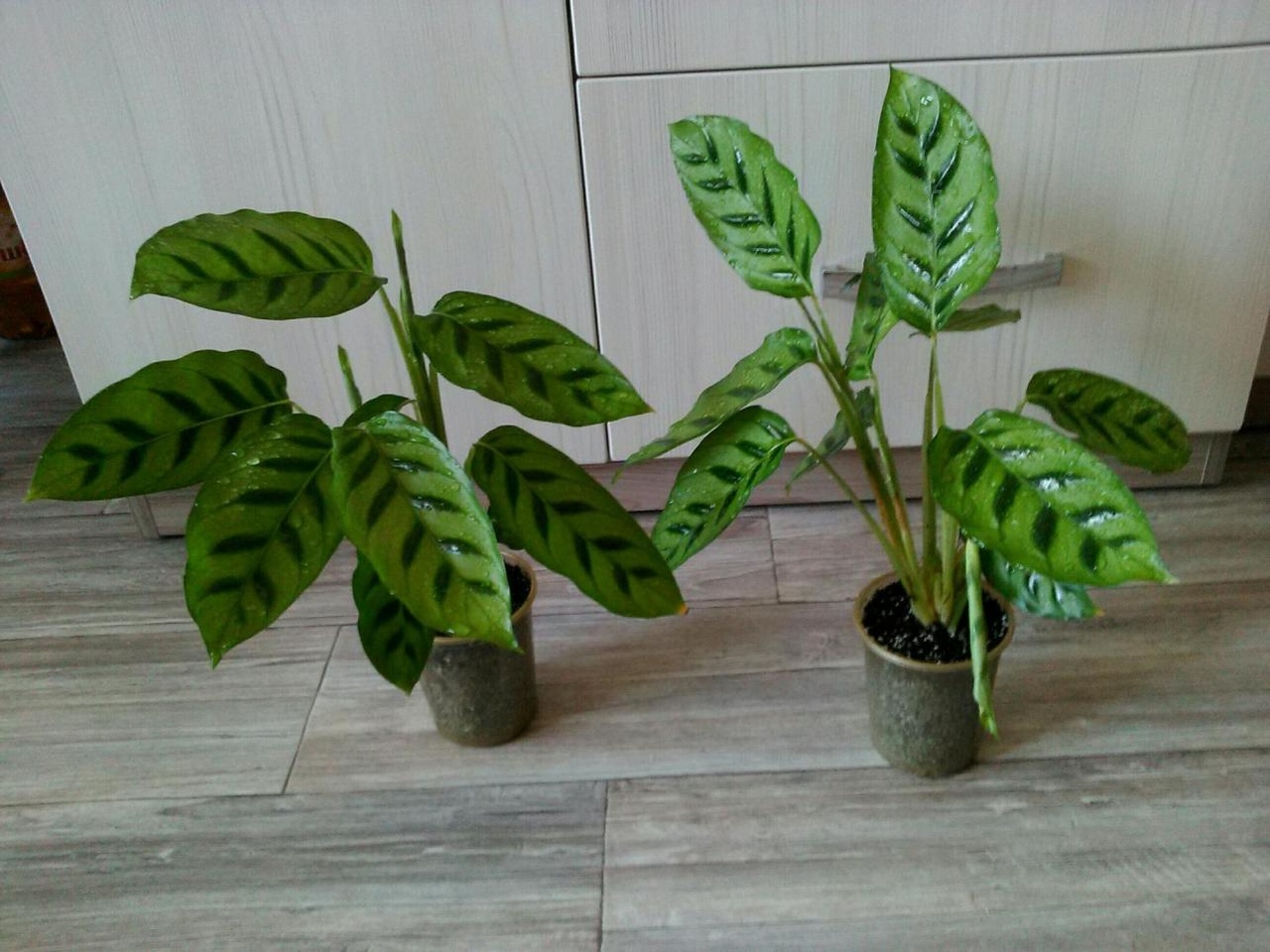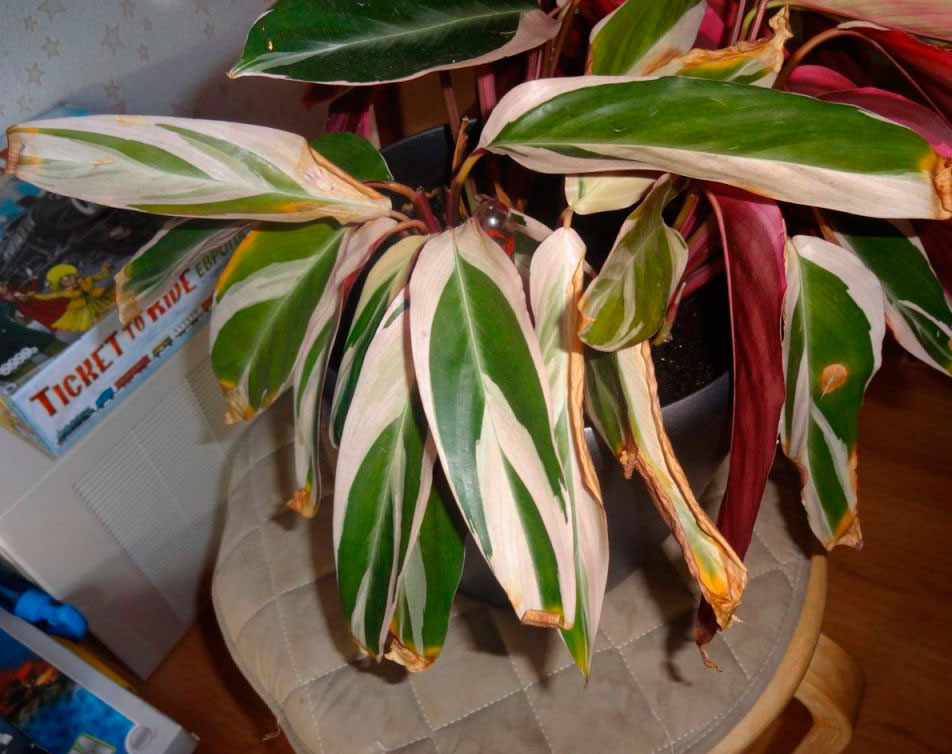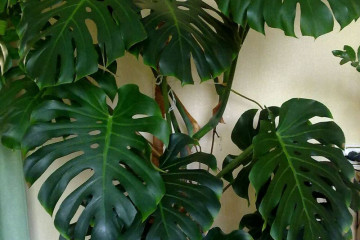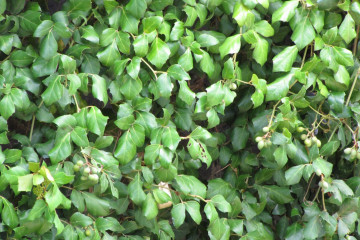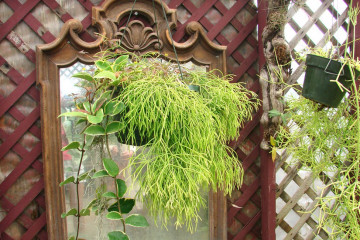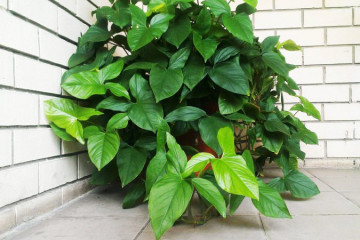Stromanta - home care and reproduction
Content:
The ornamental plant stromant has large leaves with an unusual color and has the ability to pull them up at night, which is why it was nicknamed the "praying flower". Caring for a stromant is not easy, but grown with care and attention, the plant will beautify any home and garden. In addition, there is a belief that stromanta brings happiness and good luck to the house.
What does a stromancer look like, which family does it belong to
Stromanta is a flower that belongs to the arrowroot family. The closest relatives of the ornamental plant, which are also grown at home, are calathea and ktenata. Due to the similarity, stromanthus and calathea are often confused.
The plant in its natural environment can reach a height of up to 1 meter, in room conditions, the size depends on the variety and care. Oval wide leaves are half a meter long and tapered to the tips. Depending on the type, their colors can have different shades: green, lilac, white, yellow.
Common varieties
At home, different varieties of flowers are grown. Particularly popular are the stromanta triostar, the pleasant stromant, the bloody stromant, the calathea and the magic star stromant.
Stromanta Tricolor
It has another name - triostar. It is the most popular and popular variety among flower growers. On the upper green side of the leaf, it is colored in the form of stains of pink, light green and white. The reverse side of the leaf plate is purple-burgundy in color. Home care for the Tricolor stromant is not false compared to other varieties.
Stromanta Pleasant
It grows no more than 30 centimeters in height. The broad, light green leaves have dark green herringbone patterns. The reverse side of the leaf plate is painted in a silvery-green color, a pink tint appears a little.
Stromanta the Bloody
The surface of the light green leaf is glossy, with a dark green pattern in the shape of the letter V. The other side is dark red.
Stromanta Magic Star
Large leaf plates are pointed towards the ends. The leaves are dark green with random patterns of white and dull yellow color.
Stromanta Horticolor
The leaf of the stromant Chorticolor is colored in a yellow-green hue. The other side, like most varieties, has a maroon color.
Stromantha Maroon
Has a light stripe along the main vein on a green leaf. The reverse side of the leaf is dark lilac.
Briefly about the history of appearance
Stromanta is an exotic plant native to the Amazonian tropics of South America. In its natural environment, the flower grows near the rivers and reservoirs of the Amazon, and is also found in tropical forests.
Stromanta: home care
The plant is not genetically accustomed to growing in mid-latitudes, therefore it requires special and proper care.
Temperature
The room temperature should not be lower than 18 degrees. The optimal indicator of the temperature for growing a indoor flower of a strawman in the summer period is from 23 to 27 degrees, in the winter - from 20 to 23 degrees.
Lighting
Lighting should be moderate. Too bright lighting will leave burns on the leaves, and lack of it will stop the growth of the plant. It is recommended to place the flower pot on the eastern and western windowsills of the house. In winter, with a lack of natural light, it is necessary to create it artificially, using lamps.
Watering
The moisture-loving stromant is very demanding on the amount of watering. The potting soil should be constantly moist and loose, especially during the hot and dry summer months. By winter, the regularity and abundance of watering is reduced. You can not get too carried away with watering, otherwise moisture will stagnate in the soil, which will lead to numerous diseases and the appearance of a fungus.
Spraying
Caring for the stromant must necessarily include the procedure for spraying with water. Since the ornamental plant is valued for its beautiful leaves, it is necessary to regularly remove accumulated dirt and dust by spraying. In addition, the procedure increases the humidity in the room.
Humidity
The flower requires high humidity in the room. In winter, due to heating, the air often becomes dry, so a damp cloth is constantly placed on the pipes, and a container with water is placed on the windowsill.
Priming
The soil for stromant should include peat soil, sand, humus and compost from rotted leaves. Peat soil is sometimes replaced with compost soil. During cultivation, the land should be periodically fed with fertilizers and loosened.
Top dressing
Top dressing is carried out from May to August. In winter, the flower should rest, so do not disturb it. Top dressing is carried out with complex organic and mineral preparations intended for decorative deciduous plants.
Features of care in winter, dormant period Stromanty
In winter, you need to take care of the stromanthus carefully so as not to disturb the flower. During the rest period, the indoor stromant does not require special care. Watering is rarely done, only when the soil dries out. When dried leaves appear, they must be removed. It is also recommended to spray the plant to remove dirt and dust. After each watering, it is necessary to loosen the soil.
When and how it blooms
The indoor plant stromanthus rarely blooms. In addition, its flowers are small and inconspicuous, therefore they are not of particular value. The plant is grown for the leaves.
Types of flowers
The flowers are small with white petals; they are identical in almost all varieties. There are varieties that do not bloom at all. The flower bracts and sepals are red.
Flower shapes
The inflorescences are connected in small panicles and grow on long peduncles reaching a length of 8 centimeters. Inflorescence panicles can be about 6 centimeters in diameter.
Flowering period
The ornamental deciduous plant, stromanthus, usually blooms during the summer. From late May to early August.
Changes in care during flowering
During the flowering period, it is recommended not to fertilize the plant, especially with nitrogen-containing preparations. Also, in order not to damage the inflorescences, the flower is not sprayed or pruned.
Pruning
The flower does not need to form a crown, however, dried and yellowed leaves must be trimmed periodically.
How Stromantha reproduces
Two methods of flower propagation are widespread: germination of seeds and rooting of cuttings.
Germinating seeds
Seeds are planted at the end of winter. Seeds need to be selected healthy, before planting, they can be treated with a special preparation. Seed germination substrate, it is better to pick up in specialized stores. After planting the seeds, the soil must be well watered. If natural light is not enough, it is necessary to place lamps next to the box.
Rooting cuttings
Reproduction in this way is carried out in late spring or early summer. It all depends on the shoots, they must develop to a certain state. Then cuttings no more than 10 centimeters in size are cut from them. Each cutting should have at least 3 leaves.
The cuttings are placed in a glass of water and covered with foil. When the roots begin to form, the cuttings are planted in the ground.
Transfer
The stromant is transplanted in early spring. In the first years of the life cycle, the procedure is carried out annually. The plant grows quickly, the root system grows, so you need to change the growing container to a more suitable size.
The transplant is carried out by the transshipment method. The soil for planting should be loose, humic and slightly acidic. The substrate should include: humus, sand and compost soil. A layer of drainage material is placed at the bottom of the pot, then a flower is planted.
Possible problems in growing Stromant
Florists are often faced with the problem of drying leaves, then the question immediately arises of what to do if the leaves of the stromant are drying. Sometimes only the edges dry, and sometimes the whole bush. There can be many reasons, and each refers to improper flower care.
Stromanta: leaves dry, what to do
The leaves begin to turn yellow, curl, dry out and crumble for the following reasons:
- Excessive exposure to direct sunlight. It is best to remove the plant in a place with moderate lighting.
- Lack of watering. It is necessary to normalize watering.
- Dry air. It is necessary to spray the plant with water.
- A spider mite has appeared. Treat pests with insecticides.
Stromanta is primarily valued for its beautiful leaves with unusual colors. If you want to grow a flower at home, you need to carefully monitor its condition.



